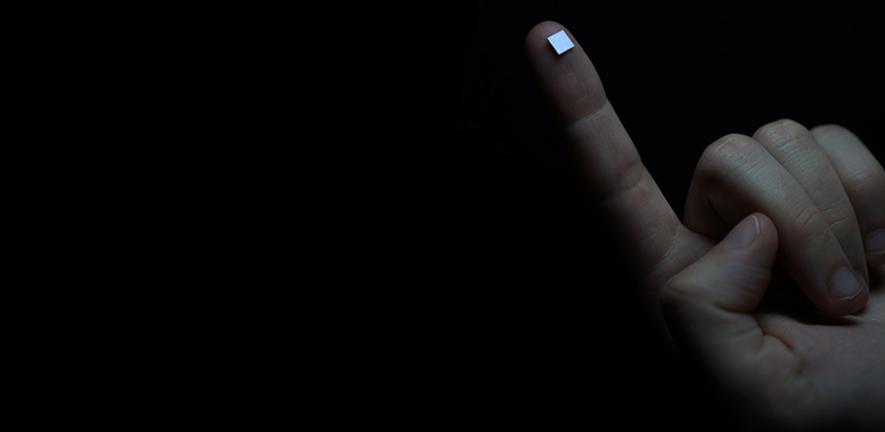
ΑΙhub.org
Using machine learning to improve all-in-one miniature spectrometers
 On-chip spectrometer on a fingertip. Credit: Suvi-Tuuli Akkanen, Mikko Turunen, Vincent Pelgrin. Aalto University.
On-chip spectrometer on a fingertip. Credit: Suvi-Tuuli Akkanen, Mikko Turunen, Vincent Pelgrin. Aalto University.
An international team of researchers have designed a miniaturised spectrometer with high resolution, employing machine learning methodology as one of their tools. The results are reported in the journal Science.
Traditionally, spectrometers rely on bulky components to filter and disperse light. In addition, these traditional spectrometers are heavy and large, which limits their application in portable and mobile devices. Modern approaches simplify these components to shrink footprints, but tend to suffer from limited resolution and bandwidth.
To tackle these problems, and to shrink the size of the system, researchers have coupled layered materials with machine learning algorithms. The result is an all-in-one spectrometer thousands of times smaller than many current commercial systems. At the same time, it offers performance comparable to benchtop systems. In other words, these new spectrometers will provide portable alternatives to the standard systems.
“We eliminate the need for detector arrays, dispersive components, and filters. It’s an all-in-one, miniaturised device,” said Dr Hoon Hahn Yoon, from Aalto University in Finland, first author of the paper. This spectrometer-on-chip technology is expected to offer high performance and new usability across science and industry.
The detector uses van der Waals heterostructures – a “sandwich” of different ingredients, including graphene, molybdenum disulfide, and tungsten diselenide. Different combinations of material components enable light detection beyond the visible spectrum, as far as the near-infrared region. This means the spectrometer detects more than just colour, enabling applications such as chemical analysis and night vision.
“We detect a continuum spectrum of light, opening a world of possibilities in a myriad of markets,” said Yoon. “Exploring other material combinations could uncover further functionalities, including even broader hyperspectral detection and improved resolution.”
Artificial intelligence is a key aspect of these devices, commonly called “computational” spectrometers. This technology compensates for the inherent noise increase that inevitably occurs when the optical component is wholly removed.
“We were able to use mathematical algorithms to successfully reconstruct the signals and spectra” said lead author Professor Zhipei Sun, also from Aalto University, and a former member of Cambridge’s Department of Engineering. “The current design is just a proof-of-concept. More advanced algorithms, as well as different combinations of materials, could soon provide even better miniaturised spectrometers.”
The detection of light – and the full analysis of spectroscopic information – has applications in sensing, surveillance, smart agriculture, and more. Among the most promising applications for miniaturised spectrometers are chemical and biochemical analysis, thanks to the capabilities of the devices to detect light in the infrared wavelength range.
The new devices could be incorporated into instruments like drones, mobile phones, and lab-on-a-chip platforms. The latter also opens up opportunities in healthcare. In this field, spectrometers and light-detectors are already key components of imaging and diagnostic systems.
“Our miniaturised spectrometers offer high spatial and spectral resolution at the micrometre and nanometre scales, which is particularly exciting for responsive bio-implants and innovative imaging techniques,” said co-author Professor Tawfique Hasan, from the Cambridge Graphene Centre.
The researchers hope their contribution is a stepping stone towards the development of more advanced computational spectrometers.
Read the paper in full
Miniaturized Spectrometers with a Tunable van der Waals Junction
Hoon Hahn Yoon et al.










